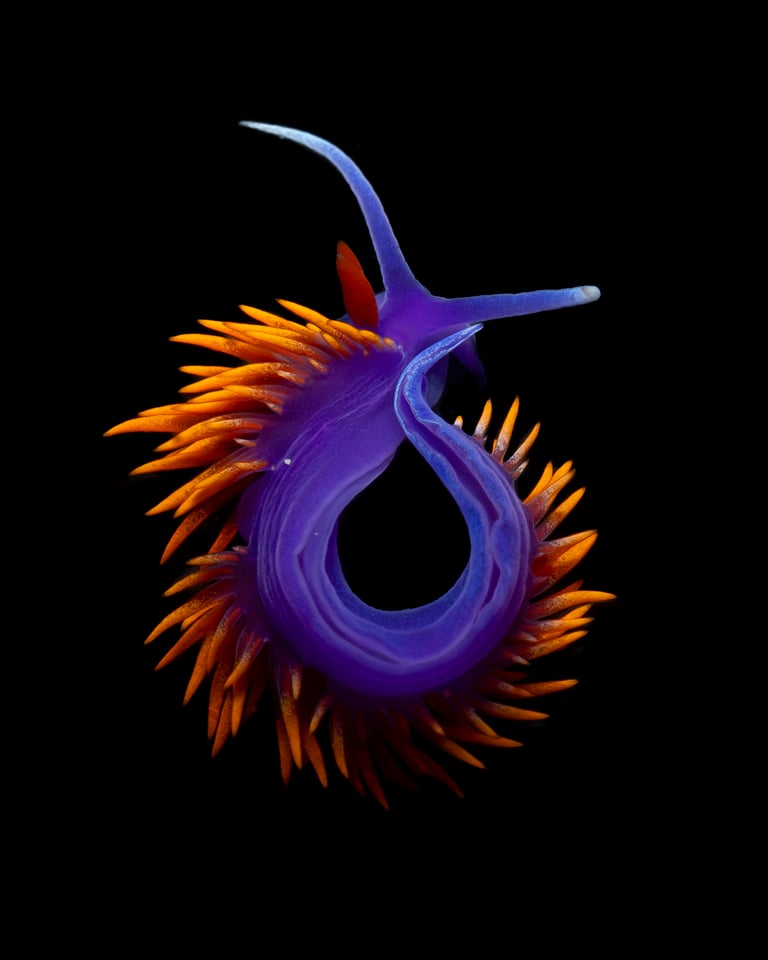Sadie Hine (@shine_photography__ on Instagram) is a young nature photographer with a unique photographic style. Her work incorporates contrast, color and texture across an array of taxa to create bold images of wildlife and nature. I realized that I can tell a Sadie Hine image without reading her name. It made me curious to ask Sadie more about her specific style and journey as a photographer.
I became familiar with Sadie through Girls Who Click, a nonprofit organization connecting women and girls to empower them as nature photographers. We are both ambassadors, which gives us opportunities to connect with other women in the field, find opportunities to share our photography, and participate in workshops along with meet and greets.

I notice a classic “Sadie Hine photography” style when I see your photography. How would you describe your style? And how do you keep a consistent style, while also photographing a wide diversity of subjects?
I love texture. Most of my favorite shots have a very strong focus on unique textures and patterns. Things get really exciting when I find wildlife residing within these textures. This happens a lot in macro photography, but I have a handful of shots of owls and mammals that fit the same theme as well. Sometimes, the textures are even on the animals themselves! I’ve had a lot of fun with up close plumage/fur shots as well.
Aside from more environmental-texture shots, I also take a lot of black background photos that focus on different marine life found off the coast here in California. In contrast to my other work, this completely removes any environmental elements from the shot and focuses on highlighting the beauty of each individual organism. All of my black background photos are taken from above the surface, either underexposing and using kelp as a background or by using an artificial black background. I don’t use any fancy flash setup (although I should probably look into that), just simple LED lights I found on Amazon for a couple bucks. My favorite is a small dive video light, very simple.

How do you decide how you want to frame or compose a photo?
Framing has come from a lot of experimentation and practice. I really enjoy environmental shots, so I am constantly looking for subjects with unique foregrounds and backgrounds. I think I’ve just developed an eye for it at this point, it’s more instinctual, and I don’t think about it much.
What’s in your camera bag typically?
Right now I have my Canon R6, Tamron 150-600mm, Sigma 24-105mm, Canon 100mm f/2.8 macro, and a bunch of random cheap LED lights. On specific outings, I will also take out my Laowa probe lens, which I mainly use for tidepool and sand dune shots.

What is your favorite place and subjects to photograph?
I love the intertidal zone. I grew up landlocked in Colorado, so I think that makes the ocean even more exciting for me. Tidepools make up the most biodiverse ecosystems I’ve explored, and it is so easy for me to get lost in them. If you sit in one spot for long enough, you’ll often start to notice things that you had no idea even existed. It’s almost meditative for me, as I am always completely present in the moment while looking for sea creatures.
As far as subjects go, I love nudibranchs. Growing up, I had no idea they could be found along the coasts of the US. I thought you had to dive somewhere tropical to see them, but upon moving to California, I learned they can be found without even getting into the water. These marine mollusks have changed my life.

This is one of my favorite photos! Can you tell me more about how you took this?
For that shot, I was using the Loawa probe lens, which was perfect for including the algae in the background. The subject is from the genus Coryphella, which is en route to getting split into three different species. They’re commonly known as three-lined aeolids and are common along the west coast. I shot it in a super tiny tide pool, no more than a few inches deep, and used my small dive video light. It took waking up at 3am for low tide that morning and driving to a spot near Santa Cruz, California.
Texture and color are huge factors of what makes your photography stand out. What goes through your head in relation to these while photographing?
I’d say the biggest part is just taking the time to look closely at everything. If you have a cool scene, look at it from as many different perspectives as possible. I like shooting a lot of macro subjects from a birds eye view rather than just classic portraits, which can be a very effective way to incorporate storytelling and a sense of place into my work.

How and when did you start photographing?
My photography journey began with owls when I was around the age of 13. My dad would take me to go look at families of screech and great horned owls that lived in our neighborhood. He got me my first camera, and was very excited when I started to really dive into the hobby. He passed away recently, which I guess has made photography even more special to me. I hope to continue sharing the beauty in the natural world that he introduced me to growing up. There were so many moments I shared with him that continuously inspire my work.
How has Girls Who Click changed your path as a photographer?
I became an ambassador back in 2020, and it has been crazy. My first mentor was Karine Aigner, who really helped me learn the basics of using a DSLR and opened my eyes to the importance of composition and storytelling within my photos. Our relationship eventually led to my first trip to Africa, where I took an award-winning shot that landed my work in the Natural History Museum of Los Angeles.
Lots of other opportunities have come from that experience as well. Aside from these achievements, the community I’ve gained through Girls Who Click has been very important. Hearing about other women’s stories, achievements, and challenges has made a huge impact on my life and helped me persevere through my own struggles.

How has being a woman in nature photography affected your experience?
Because I started photography fairly young, I ended up in a lot of “young wildlife photographer” group chats on social media. These communities were wonderful, but it was hard to ignore that I was always one of maybe two or three other girls alongside dozens of guys. Sometimes, things would get uncomfortable. People would react differently because we were girls. I still made a lot of really good friends through these chats, but it really drove home the importance of groups like Girls Who Click, who give women a safe space to connect with others.
I’ve also had a few viral videos where I didn’t show my face, and a surprising amount of commenters automatically assumed I was a man. Seeing the way other female content creators have been brought down for simply just showing their face online has made me hesitant to be more open about who I am on my social media pages.
What do you hope people take from your photos? Do you feel that there is an underlying message in your work?
Our world is filled with diversity. There are countless, seemingly “alien” worlds at our own feet that oftentimes go unnoticed. No matter how obscure some organisms may seem, we still share this planet with them, and that alone amazes me. I hope to encourage people to take a closer look at the world around them and get passionate about their local flora and fauna.

 Info Malang Raya Its All About World News
Info Malang Raya Its All About World News



